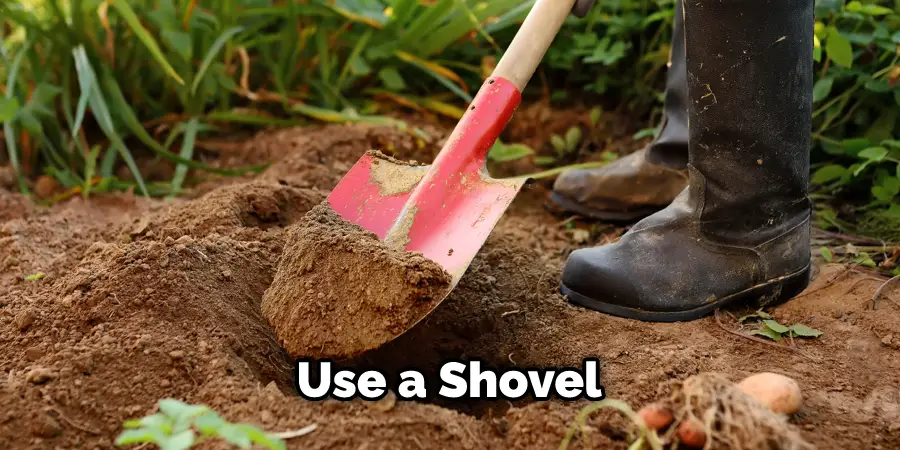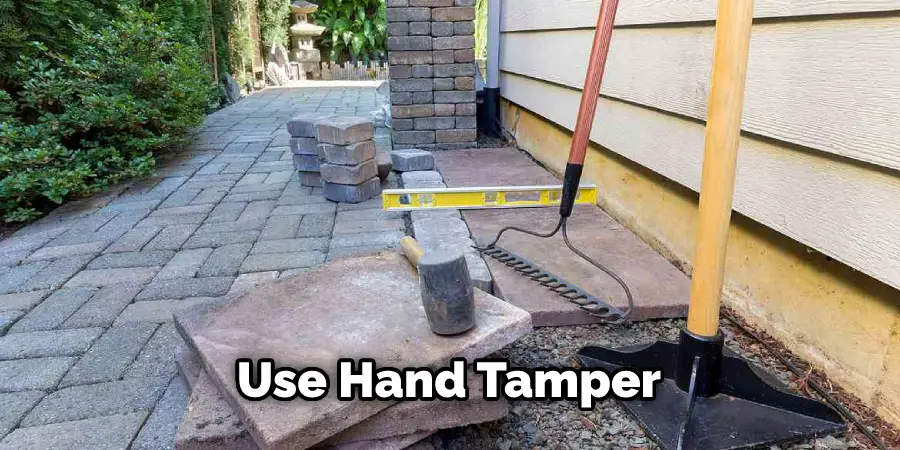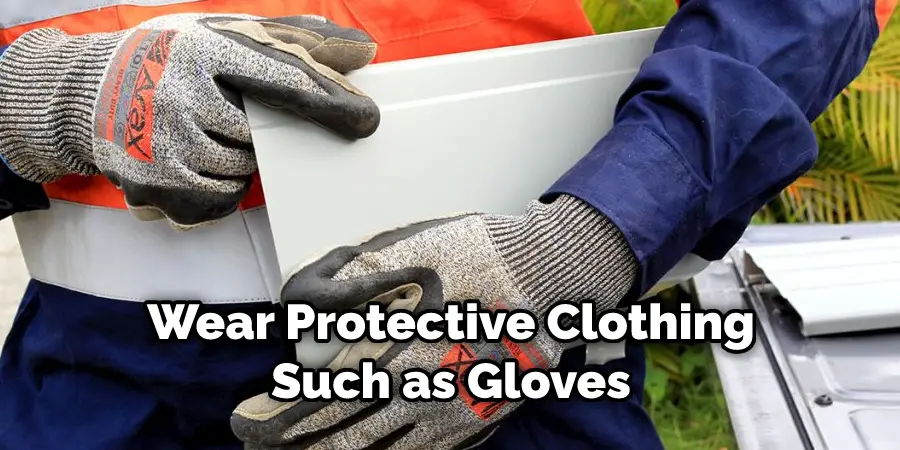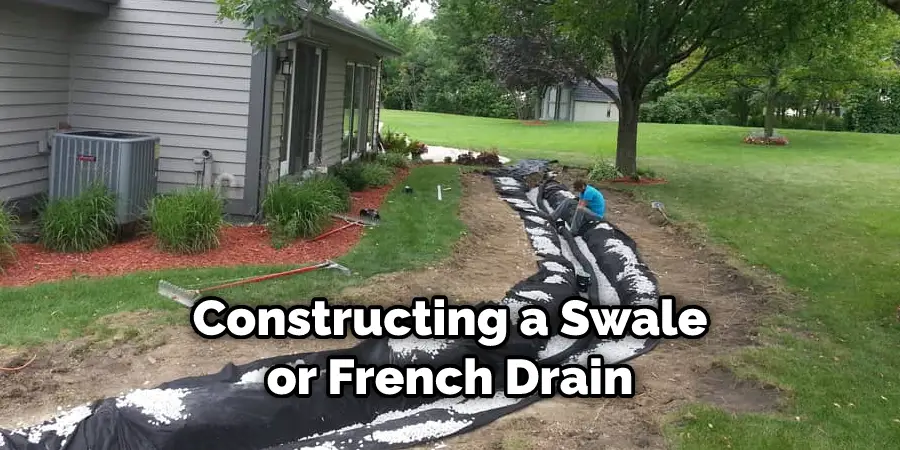Muddy driveways can be a major source of frustration for homeowners. Not only are they unsightly, but they can also quickly create a mess and become dangerous when wet. So, we need to learn how to fix a muddy driveway. In addition, constant traffic on the driveway will cause it to break apart and require costly repairs or even complete resurfacing. You can avoid these problems and enjoy a better-looking driveway with proper maintenance and repairs. Knowing to fix a muddy driveway will help you keep it in good condition while avoiding messes and costly repairs.

One of the biggest advantages of knowing to fix a muddy driveway is that it can increase the value of your home. A great-looking, well-maintained driveway will increase curb appeal and make your home look more attractive to potential buyers. Additionally, it can extend the life of your driveway by preventing further damage caused by water pooling or soil shifting. You can find step-by-step instructions on how to fix a muddy driveway in this blog article.
Materials You Will Need
- Shovel
- Hose or Pressure Washer
- Landscape Fabric
- Gravel
- Compatible Fill Dirt
- Auto Ramp (optional)
- Spreader Bar (optional)
- Leveling Tool
- Wheelbarrow and Utility Vehicle
- Protective Eyewear, Gloves, and Clothing
Step-by-Step Processes for How to Fix a Muddy Driveway
Step 1: Inspect the Muddy Area
Before beginning any repairs, it is important to thoroughly inspect the area of mud and ensure that there are no cracks or other weaknesses in the driveway that may need to be addressed. Use a shovel or hoe to remove as much of the excess mud from the surface of your driveway as possible. It will be necessary to take extra care not to damage any of the surrounding vegetation.

Step 2: Spread Gravel Over the Muddy Area
Once you have removed as much mud as possible, spread a layer of gravel over the affected area. This will help to create a solid base for your repairs and reduce the chances of further problems arising. Use a mechanical compactor or hand tamper to press down and level out the gravel surface firmly. Ensure that all of the gravel is evenly distributed and that there are no high or low spots in the area.
Step 3: Add Sand To Fill in Any Holes
Once the gravel has been compacted, you may need to add a layer of sand over the area. This will help fill in any holes or cracks that have not been filled with gravel. Similar to the previous steps, use a mechanical compactor or hand tamper to press down firmly and level out the sand surface. Make sure that all of the sand is evenly distributed and that there are no high spots or low spots in the area.
Step 4: Add a Layer of Gravel on Top of the Sand
Once you have filled in any holes with sand, spread a layer of gravel over the affected area. This will help to create a solid base for your repairs and reduce the chances of further problems arising. Again, use a mechanical compactor or hand tamper to press down firmly and level out the gravel surface. Ensure that all of the gravel is evenly distributed and that there are no high or low spots in the area.

Step 5: Add a Sealant to Protect the Driveway
Once you have compacted the gravel, adding a protective sealant to your driveway surface is important. This will help to prevent further mud build-up and keep the area looking great for longer.
Allow your sealant to dry fully before allowing any vehicles or heavy equipment onto the driveway. This will give the sealant time to properly bond with the surface and protect it from future damage. Once complete, your driveway should be good as new.
Safety Precautions for How to Fix a Muddy Driveway
- Wear protective clothing such as gloves, work boots, and safety glasses to protect yourself from any debris.
- Wear a dust mask when working with dirt or gravel in order to avoid inhaling particles that may be hazardous to your health.
- Make sure the area is well-ventilated by opening windows or using fans.
- Avoid working in wet weather or after heavy rain, as the mud may be slippery and more difficult to work with.
- Use a shovel or other hand-held tools to remove the excess mud and dirt from the driveway surface when possible.
- If you need to drive a vehicle on a muddy surface, use caution and proceed slowly to avoid skidding.
- When using a power washer, start with the lowest pressure setting available and then increase it until you begin to see results. Be sure to keep the nozzle moving while washing so you don’t cause damage to the driveway surface.
- After all of the excess mud has been removed, spread a layer of gravel over the entire area. This will help to fill in any holes or low spots and provide better traction for vehicles driving on the driveway.

Once you have followed these steps, your muddy driveway should be fixed and ready for use. Be sure to take all necessary safety precautions and follow any instructions provided with tools and equipment used in the process. With a little bit of effort, you can have a clean and safe driveway in no time.
How Long Will the Repair Job Last With Proper Maintenance?
The answer to this depends on the reconstruction and maintenance methods used. If a thorough job is done, then it can last for several years if properly maintained. A key part of maintaining a fixed driveway is periodically checking for signs of erosion or failure and addressing them as soon as possible. This includes checking for settling gravel or soil, cracks in asphalt, poor drainage and other issues.
A moderate amount of maintenance can go a long way in ensuring the driveway remains in good condition for years. The best form of maintenance is prevention. Keeping large vehicles off the driveway, avoiding driving over puddles or ice patches, and ensuring that drains are always clear and properly functioning can help keep mud and other debris from building up again. Regularly cleaning the driveway will also help to keep it looking its best.
Are There Any Other Considerations You Should Take When Repairing Your Muddy Driveway?
When repairing your muddy driveway, you should keep a few other considerations in mind. First, consider the grade of the driveway. Do not make any driveways with a significant slope or grade until you have leveled off the first. This will ensure more even patching and reduce erosion issues when it rains.
Second, make sure to plan for adequate drainage so the water can flow away from the driveway and not pool around it. Improper drainage can lead to a repeat of your muddy problem in no time. Constructing a swale or French drain may be necessary depending on how much water must be diverted from the driveway. Finally, if you are unfamiliar with repairing a muddy driveway or concerned about making mistakes, it is worth considering hiring a professional contractor. Seek out someone who specializes in asphalt and concrete repair for the best results.

Is It Possible to Do This Kind of Repair Work on Your Own, or Should You Hire a Professional?
If you have a muddy driveway and want to fix it yourself, there are some things that you can do. You can choose to use gravel or rocks as a filler material for the holes, but this is only a temporary solution. The best option for fixing your muddy driveway would be to hire a professional with experience in this kind of repair work. They will know how to grade and compact the driveway properly, what type of materials should be used for the job, and how long it will take to complete.
Professionals can also offer advice about the most cost-effective materials that you can use for your project. Not only can they save you money on repairs, but they can also help prevent future mud and erosion problems. When deciding if you should hire a professional for your project, take into account the cost of materials, the complexity of the job, and your own skill level. With the right information and expertise, a professional can get the job done quickly and correctly so that you don’t have to worry about mud and damage any longer.
Conclusion
In conclusion, fixing a muddy driveway is a relatively straightforward process. Whether you hire a professional or take on the project yourself, it’s important to know your options and the steps required to fix the issue. You may need to remove excess water, supplement soil with material such as clay or gravel, use reinforcements like geotextile fabric, add a drainage system, and reseal the surface. Taking the time to repair your driveway properly will protect it from further damage and can last for many years. I hope reading this post has helped you learn how to fix a muddy driveway. Make sure the safety precautions are carried out in the order listed.
About
Outdoor Fixes is a distinguished figure in the world of Diy design, with a decade of expertise creating innovative and sustainable Diy solutions.
His professional focus lies in merging traditional craftsmanship with modern manufacturing techniques,
fostering designs that are both practical and environmentally conscious. As the author of diy,
outdoorfixes delves into the art and science of outdoorfixes-making, inspiring artisans and industry professionals alike.
Education RMIT University
(Melbourne, Australia) Associate Degree in Design (Outdoor Fixes) Focus on sustainable design, industry-driven projects,
and practical craftsmanship. Gained hands-on experience with traditional and digital manufacturing tools, such as CAD and CNC software.
Nottingham Trent University
(United Kingdom) Bachelor’s in outdoorfixes.com and Product Design (Honors) Specialized in product design with a focus on blending creativity with production
techniques. Participated in industry projects, working with companies like John Lewis and Vitsoe to gain real-world insights.
Publications and Impact
In diy, Outdoor Fixes his insights on indoor design processes, materials, and strategies for efficient production.
His writing bridges the gap between artisan knowledge and modern industry needs, making it a must-read for both budding designers and seasoned professionals.

